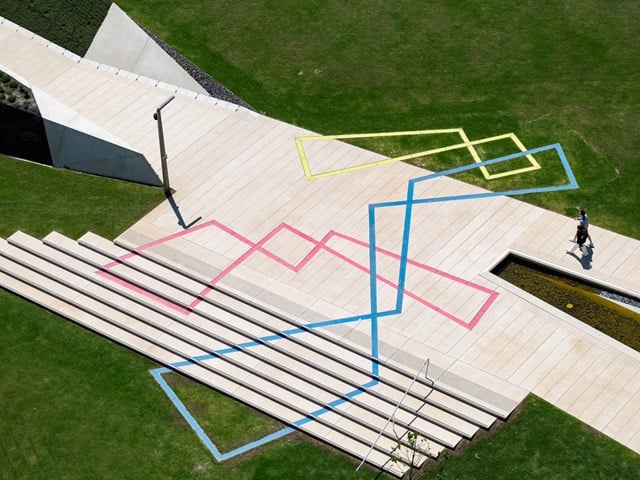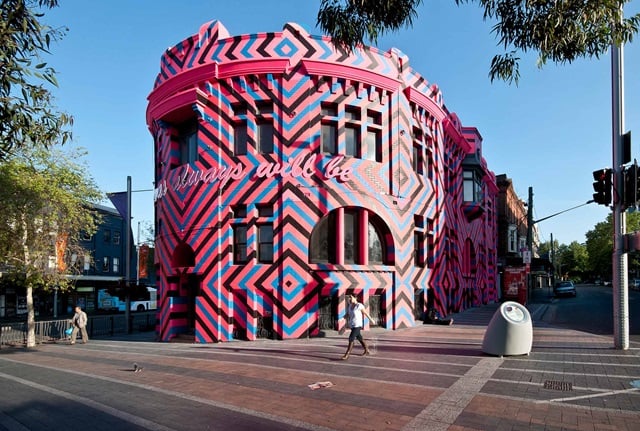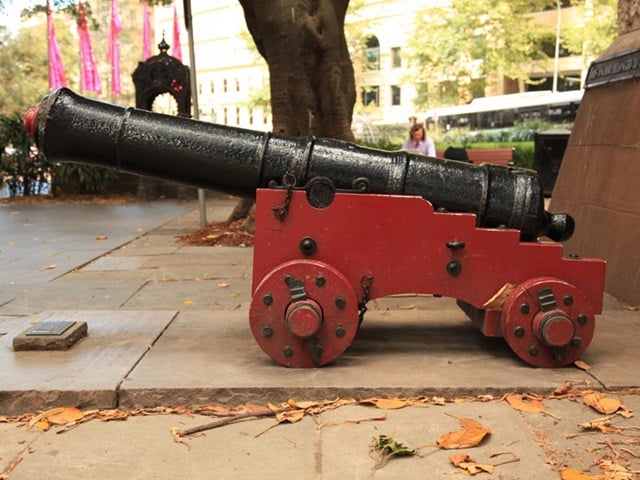


A red lantern enveloped in a delicate screen depicting chrysanthemum flowers left behind after tea is poured.
Artwork description
Pao Cha (to steep tea), created by artist Pamela Mei-Leng See, envelops the red lantern information kiosk in Chinatown. This artwork is a key component of the Chinatown kiosk designed by Frost Design and Lacoste + Stevenson Architects.
In the middle of Chinatown a former seating pagoda has been converted into a tourist information kiosk. The new enclosure is treated as a patterned red lantern by day which is illuminated by night. The lantern sits to the side of pedestrianised Dixon Street, on a plinth that resolves the steeply sloping Goulburn Street footpath.
The lantern is inserted as a new volume inside the existing pagoda structure. It consists of 2 semi-circular halves that are clad with patterned, curved glass. The sliding semi-circle of glass screens open to reveal a hot red interior that houses a wall of shelving for brochures, pamphlets and tourist information. Symbolising the Chinese community in Australia, flowers, fish and birds are intricately carved into glass.
The screen design, which has been taken from paper cuts, represents the residual chrysanthemum flowers in a ceramic vessel after the tea has been steeped and poured. In addition to the symbolism of making a tea reading for good fortune, the ceramic pattern underneath the flowers is intended to bring prosperity (fish) and longevity (stork).
The kiosk won a Small Project Architecture award at the 2012 NSW Architecture awards.
Artist
Pamela Mei-Leng See is a Brisbane based artist of Chinese descent who practices a contemporary form of traditional Chinese paper cutting.
Inscription
Chinatown public art strategy
A series of public art projects began in 2010 to revitalise and extend Chinatown’s public spaces.
The program was based on extensive public consultation and development by curatorial advisor Aaron Seeto as part of the Chinatown public domain plan.
This approach recognises the existing artworks commissioned in 1999 and the character of this vibrant urban area.









